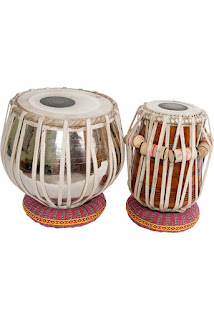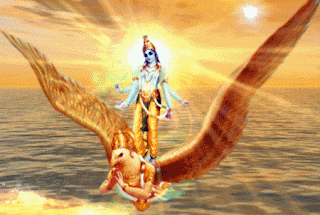Kirtan *The Power of Bhakti Yoga.
https://en.wikipedia.org/wiki/Kirtan
Musical recitation of hymns, mantras and the praise of deities has ancient roots in Hinduism, as evidenced by the Samaveda and other Vedic literature.
Kirtan is one of the fundamental practices of Bhakti Yoga—the yoga of grace, love and devotion.
Bhakti Yoga offers an entirely different approach. In
Bhakti, it is understood that no amount of skill, effort or achievement is,
ultimately, sufficient to earn the favor of the Divine. We cannot compel God’s
grace by our efforts, no matter how impressive our human accomplishments. In
the end, Grace flows outside the realm of effort and austerity. Divine grace
is, by definition, not something we can earn or deserve through our own work.
It comes at a time and place, and in a manner, that is not ours to command
through our sweat and effort, or through the number of hours we have spent in
meditation.
According to the devotional tradition of Bhakti, God is most
pleased by our humility, by our devotion.
Humility and devotion spring from the heart. They are not developed as a result of skills acquisition, hours of meditation, or the ability to stand on our head for an hour. Grace and awareness don’t come because we repeat a mantra a million times: all we need to do is sing it!
The simple idea behind kirtan was to sing praise to the divine in its many forms.
The word kirtan, or kirtana, means ‘telling, narrating,
enumerating or describing’ and originates from the Vedic period, where it was
first written as anukirtana or anukriti, meaning a ‘re-telling’. These
anukirtanas would re-tell the ancient vedic hymns and passages. As was the way
with the ancient world, everything was transmitted orally via spoken Sanskrit
until the Vedas (knowledge) were written down by sages and scholars. The root
word kirt, can be found in these ancient Vedic texts and is also known to go by
the name sankirtana, meaning ‘collective performance’. Kirtan is an important
aspect of yoga and one which holds so much potential for awakening and
transformation.
The ‘language of the divine’
The ancient Sanskrit language is both mathematical and vibrational, meaning each letter, syllable and word has a specific meaning and effect when it is sounded out loud. Often noted as a religious and ceremonial language, Sanskrit is also revered as the ‘language of the divine’. Considered the ‘perfect language’, the correct pronunciation of each word is said to create a vibration throughout the universe that makes contact with the subconscious mind and the world around us.
Kirtans were popularized by the Bhakti movement of medieval
era Hinduism, starting with the South Indian Alvars (Vaishnavism) and Nayanars
(Shaivism) around the 6th century, which spread in central, northern, western
and eastern
The foundations of the kirtan traditions are also found in other Hindu scriptures such as the Bhagavad-gita where Krishna describes bhakti marga (path of loving devotion to god) as a means to moksha, alongside karma marga (path of action) and jnana marga (path of knowledge). References to kirtan as a musical recitation are also found in the Bhagavata Purana, an important Vaishnava text.
Kirtan is often practiced as a kind of theatrical folk song with call-and-response chanting or antiphon. The ancient sage Narada revered as a musical genius, is called a kirtankar in the Padma Purana.
The famous story of Prahlada in the Avatara Katha mentions kirtan as one of nine forms of worship, called the nava vidha bhakti along with shravanam (listening), smaranam (remembrance), pada sevanam (service), archanam (offering), vandanam (obeisance), dasyam (servitude), sakhyam (friendship) and atmanivedanam (surrender). The so-called Naradiya Kirtan divides kirtan into five parts: naman (prayers), purvaranga (spiritual lesson based on old epics), chanting, katha or akhyan (exegesis), and a final prayer for universal welfare.
Kirtan (Sanskrit: कीर्तन) has Vedic roots and it is "telling, narrating, describing, enumerating, reporting".The term is found as Anukirtan (or Anukrti, Anukarana, literally a "re-telling") in the context of Yajna, wherein team recitations of dialogue-style and question-answer riddle hymns were part of the ritual or celebratory dramatic performance. The Sanskrit verses in chapter 13.2 of Shatapatha Brahmana (~800–700 BCE), for example, are written in the form of a riddle play between two actors.
The Vedic sacrifice (yajna) is presented as a kind of drama, with its actors, its dialogues, its portion to be set to music, its interludes, and its climaxes.
The root of kirtan is kirt (Sanskrit: कीर्त्). The root is found in the Samhitas, the Brahmanas and other Vedic literature, as well as the Vedanga and Sutras literature.
Kirt, according to Monier-Williams contextually means, "to mention, make mention of, tell, name, call, recite, repeat, relate, declare, communicate, commemorate, celebrate, praise, glorify".
A Kirtan and a Bhajan are closely related, with both sharing common aims, subjects, musical themes and being devotional performance arts. A Bhajan is more free form, can be singular melody that is performed by a single singer with or without one and more musical instruments. Kirtan, in contrast, differs in being a more structured team performance, typically with a call and response musical structure, similar to an intimate conversation or gentle sharing of ideas, and it includes two or more musical instruments, with roots in the prosody principles of the Vedic era.
Many Kirtan are structured for more audience participation,
where the singer calls a spiritual chant, a hymn or a devotional theme such as
from Vaishnavism, the audience then responds back by repeating the chant or by
chanting back a reply of their shared beliefs.
Kirtan, sometimes referred to as sankirtana (literally,
"collective performance"), is a call-and-response chanting or musical
conversation, a genre of religious performance arts that developed during
Kirtan is locally known as Abhang, Samaj Gayan, Haveli
Sangeet, Vishnupad, Harikatha. The Vaishnava temples and monasteries of
Hinduism in
The energy created by the different voices, bodies and minds all chanting and directing their energy towards the same thing is enough to make anyone understand why this is true medicine for the soul.
The feeling of chanting with others in a kirtan is certainly like no other sensation. The energy created by the different voices, bodies and minds in the room all chanting and directing their energy towards the same thing is enough to really make anyone understand why this is true medicine for the soul. Mantra and kirtan are such a wonderful part of the whole of yoga, and gathering together with others to chant brings a whole new dimension to a practice that has so much potential beyond the yoga mat.
https://amzn.to/3tsRUD7
https://en.wikipedia.org/wiki/Cymbal
https://en.wikipedia.org/wiki/Taal_(instrument)
https://en.wikipedia.org/wiki/Dholak
https://en.wikipedia.org/wiki/Damaru
TABLA
https://en.wikipedia.org/wiki/Tabla
https://amzn.to/39V2CdJ
https://en.wikipedia.org/wiki/Flute
https://amzn.to/2MzwJia
Dafali
https://en.wikipedia.org/wiki/Tambourine
https://amzn.to/2YRf4oz
VEENA
https://en.wikipedia.org/wiki/Veena
GHUNGHROO
https://en.wikipedia.org/wiki/Ghungroo
माघ
पूर्णिमा
27वाँ
फरवरी
2021
Saturday / शनिवार
2021 माघ पूर्णिमा
https://en.wikipedia.org/wiki/Magha_Purnima
Maghi Purnina, also known by the
name of Magha Purnima, is known to be a day of the full moon that occurs during
the Hindu calendar month of Magh. This day falls during the Gregorian calendar
month of January or February. During this time period, the auspicious Kumbh
Mela is held every twelve years, and the Magha Mela is held on an annual basis
at the confluence of three rivers or Triveni Sangam all around north
Magha Purnima is an important day
in Hindu calendar. Religious texts describe the glory of holy bath and
austerity observed during Magha month. It is believed that every single day in
month of Magha is special for doing charity work. Magha Purnima, which is
popularly known as Maghi Purnima, is the last and most important day of Magha
Mahina. People perform certain rituals like holy bath, offering alms, donating
cow and Homa at Prayag, the confluence point of the river
During Magha people take early
morning bath in the
https://en.wikipedia.org/wiki/Vasant_Panchami
2021 date 16 February (Tuesday)























No comments:
Post a Comment